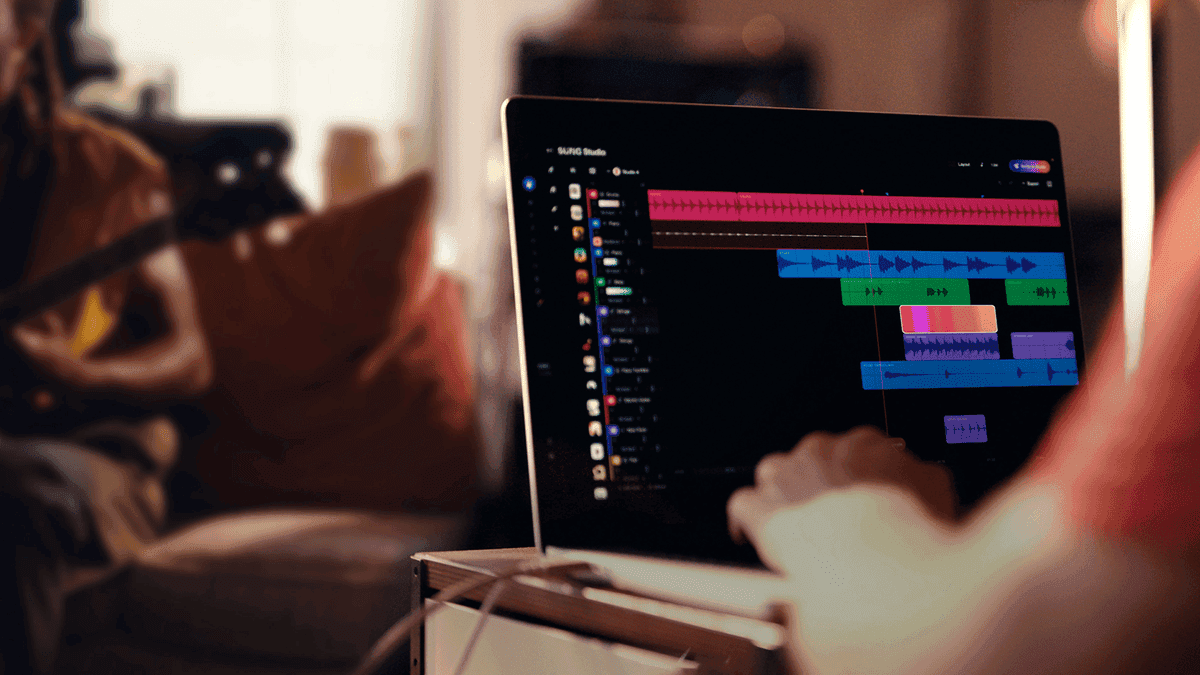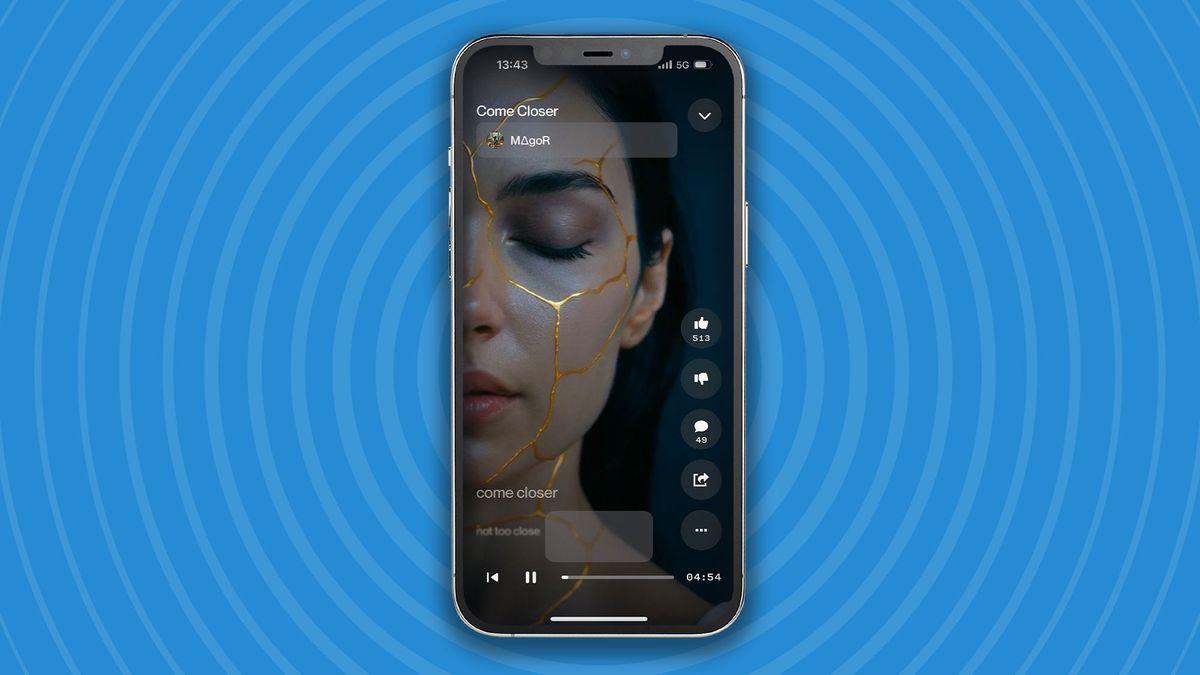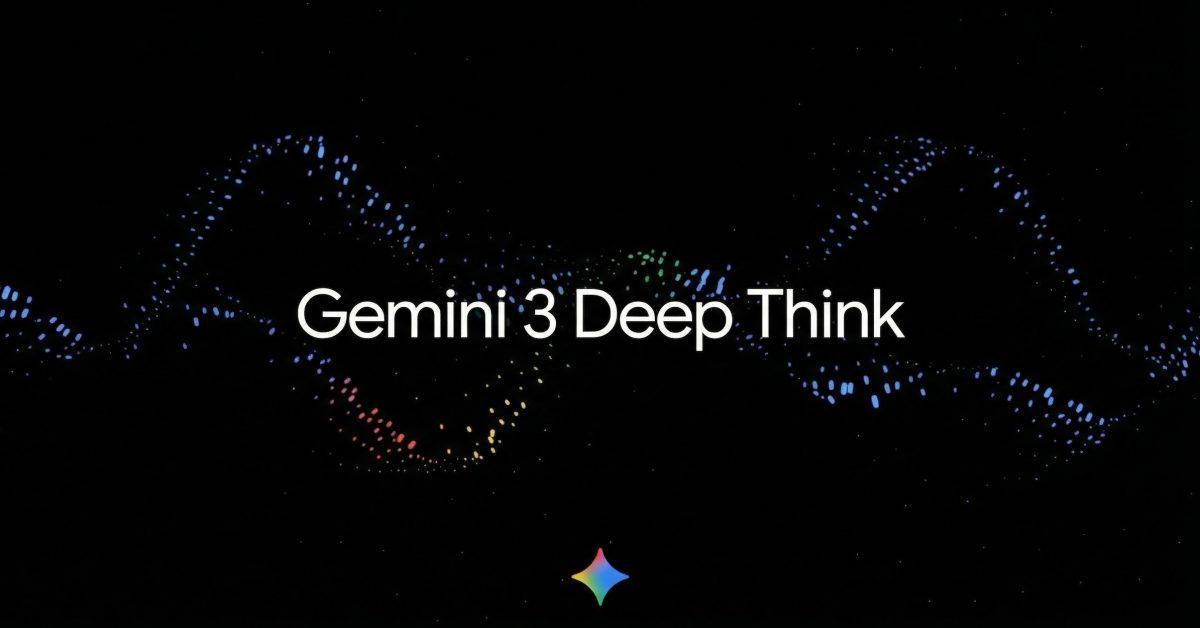Suno V5: The Latest AI Music Generator Blends Technical Prowess with Creative Limitations
3 Sources
3 Sources
[1]
Suno's upgraded AI music generator is technically impressive, but still soulless
When it's not trying to fend off lawsuits from major record labels, Suno is still working on refining its AI music creation tool. The latest model, Suno v5, is an obvious technical improvement over its previous version, v4.5+. But it still can't seem to escape the bland emptiness that pervades most AI art. There are some across-the-board upgrades in audio quality that are undeniable, like fewer artifacts and clearer separation between instruments. Some tracks produced using v4.5+ can smush all the melodic parts together in a way where the lines between guitar, bass, and synth are muddy at best. But with v5, the mixes are much cleaner. During a demo, Henry Phipps, a Suno product manager, pointed to a song we had the model generate that included a flute-like synth with what sounded like a ping-pong delay effect on it: "I've never heard that before in previous models... what that says to me is that the model understands that this is an isolated sound that's being affected and needs to be reproduced faithfully in different parts of the stereo field." Since Suno isn't actually applying effects in the traditional sense, this means the model is identifying a particular instrument and approximating the sound of a stereo delay because it's decided that is what it should sound like. Suno also claims that v5 has a better understanding of genre, though that claim seems questionable from my testing. With some of my prompts like "modern avant R&B with glitchy, but funky drums, atmospheric melodic parts, and breathy vocals," neither v5 or v4.5+ seemed to be the clear winner in delivering what I had in mind (mostly Kelela's Take Me Apart). They both got close, giving me downtempo tracks with some moody synths, but they lacked the weirdness I was hoping for. Neither could Suno quite figure out what I was looking for with "early '90s lo-fi indie rock recorded on a 4-track cassette recorder with off key vocals and slightly out of tune guitars" either, but v5 was definitely more off target. Despite everything I tried, I could not get Suno to spit out anything that sounded even remotely like Pavement. The loose slacker noise pop I associate with Slanted and Enchanted was nowhere to be found. Instead, I got bombastic "indie" rock with chunky riffs and clean driving power chords. Suno v5 kept serving up songs that sounded more like Arctic Monkeys than anything released before the turn of the century. Similarly, in my testing, v5 seemed to struggle with era- or decade-specific prompts at times. When I asked for "late 1970s krautrock," v4.5+ basically nails it outside of the vocals (more on that later). But v5 often delivers '80s-tinged synthpop and tracks that are distinctly more modern sounding, even if they have some of that classic krautrock DNA. What I will say is that the arrangements that Suno's v5 model creates are much more complex. Compared to v4.5+, there are more one-off musical flourishes that keep things from getting too repetitive and more varied song structures. Where v4.5+ is usually content to stick with a basic verse-chorus-verse structure (with a bridge tacked on for good measure), v5 would often have pre- or post- chorus sections, multiple bridges or breakdowns, and generally build over the course of a track offering more of an arc than just distinct sections. It also occasionally delivered interesting results when remixing existing tracks. I uploaded a song from an EP I released a few years back (which probably should have tripped its copyright filter) and look, I'm not going to lie, I kind of liked the way it transcribed parts of my guitar solo into a recurring synth motif and turned my big chord pads into driving arpeggios. But what was missing in all of these covers of my song that I asked Suno to create was the raw, lo-fi nature of the track that I recorded in my living room at 3AM about six years ago. And that's kind of a running theme here. While Suno can mimic some of the superficial features of an old recording or a human performance like tape hiss or breaths, it always feels inauthentic. Phipps admits that he hasn't heard the vocal model recreate the unique imperfections of a real human performance. In its early messaging about v5, Suno touted its "emotionally rich vocals" and "human-like emotional depth," but that phrasing is now absent from any public-facing materials. Instead, the company has now chosen to describe the vocals as "natural, authentic," chalking the change up to a "stylistic choice." But even that feels like a stretch. While, yes, compared to v4.5+ the vocals feel more human, they're still stiff. Phipps explained that "when we perceive a vocal out of Suno [v4.5] to be emotionally flat, I think it's because it's just missing some detail that gives it that edge," and that the higher fidelity of the v5 model delivers that detail. It's hard to argue with the technical aspects of that claim -- vocal performances are more detailed -- but they're still all painfully generic. Every rock vocal ends up sounding like Imagine Dragons or Mumford and Sons, every R&B song like a sleepwalking Adele or a charmless Ariana Grande. There are no edges to any of the Suno vocals. Everything is bathed in reverb, layered with harmonies, and perfectly on pitch. Even if you explicitly tell it not to do these things, the model just ignores you. I asked v5 for an "unprocessed emotional solo A cappella female vocal performance with no reverb, no harmonies, no effects, just dry vocals." The two songs it delivered were bathed in reverb, included additional vocalists harmonizing with the first, and one even had what sounded like a bass accompaniment. (Though, it may have been a voice approximating a bass.) But Phipps wasn't surprised. The "models don't yet understand descriptions of specific effects and recording techniques. The way the vocal is performed is most influenced by the lyrics and the general mood," he said. So, I fed Suno lyrics that were just different enough from the Rolling Stone's "Gimme Shelter" to avoid getting flagged for copyright infringement. At first brush it seemed to have all the elements that make the original so devastating. A powerful female vocalist shouting over a full, bluesy arrangement, but it had all of the emotional impact of a dentistry textbook. When I listen to the "Gimme Shelter," it's the way Mary Clayton's voice cracks as she belts out "rape and murder" during the bridge that causes me to choke up. It's Robert Smith's completely out-of-tune warble that conveys the desperation in "Why Can't I Be You" and the tangible exhaustion in Kurt Cobain's breath right before he delivers the last line in "Where Did You Sleep Last Night" that tells you this is a man struggling with real demons. In general, trying to make Suno sound "bad" -- out of tune, raw, off key, sloppy -- was futile. For all the company's talk about how "natural" the new model's vocals sound it lacks the imperfections that often carry the emotional weight of a performance. Suno's virtual vocalists still sound detached. Model v5 might understand that a particular lyric should be sad, but it has no actual emotional connection to the words, because it's a pile of code, not an artist.
[2]
I tried Suno Studio the new platform that mixes AI music generation with hands-on editing - like GarageBand, but smarter
AI song creator Suno has gone beyond simply turning prompts into tunes. With the new Suno Studio platform, creators can now start from scratch and use AI to break down and edit their tracks, combining what might be called GarageBand-style editing with AI-fueled music generation. Suno calls the platform the "world's first generative audio workstation," and it's not a bad way to describe it. Though at first glance Suno Studio offers the conventional options of a digital audio workstation (DAW) like Pro Tools or GarageBand, you don't need pre-recorded audio, MIDI knowledge, or access to virtual instruments to make a tune. You can start with the roughest of rough ideas and grow an entire track around it using AI. You do need to pay up for the privilege of access, though. Suno Studio is currently available on desktops only, for Premier subscribers. That's $30 a month, three times the cost of a Pro subscription (prices are slightly lower if you go for the yearly payment). Still, combined with the release of its new v5 music model, there could be a lot of potential for Suno to go from a viral novelty to a serious creative tool. Essentially, it mimics the standard music platforms, but you don't have to drag in a beat; you can just generate one. You can adjust the pitch, tempo, and volume. You can isolate the vocals or replace the snare. You can also use regular (musical) language to play with the sound, whether you want to tell it to "make the synth sound more dreamy" or to "give me a funky bassline in 6/8." Then you can keep tweaking, editing on a multitrack timeline, exporting as audio or MIDI, and dropping those elements into any other production environment. You don't have to come to the table with a nearly complete song, like with most music editing software. Whatever fragments or moods you have are enough to start with. Even just humming can make for a foundation for a song. Suno Studio will offer all the drum patterns or chord progressions you could desire. From a technical standpoint, Suno Studio softens the input requirements of text prompts or pre-rendered audio. The line between composition and AI generation is blurrier. And you can tell Suno wants to appeal to both hobbyists and professionals with the features familiar to GarageBand and Pro Tools users. And while Suno allows you to edit and refine, it's not yet capable of deep customization. For instance, you can't tell it to mimic a specific player's phrasing or perform a solo in the style of your favorite local pianist. That's likely by design. Suno says Studio should be a collaborator, not a way to rip off artists. I decided to play around with making songs using Suno Studio. I started by asking for an upbeat pop song, then used the remix tool to give it a 50s rock and roll vibe and make it a summer hit about dancing and sunshine. The lyrics it generated were pretty on-the-nose about it, but it wasn't bad. I used Studio to play with the stems, swapping out the drums from it with the drumbeat from another prompt result and cutting out one of the two effects tracks. It was pretty easy, I have to admit, though whether the result is impressive or irritating is subjective. I then wanted to see how specific I could make the sound and asked for a "1980s-style synthwave track with a dramatic saxophone solo. The song should be about driving through the night." I wasn't too impressed with most of what came out, but I did like the bass beat and the sound of the singer's voice, so I pulled those stems out and told Suno Studio to make another song with those sounds. Though the lyrics weren't ideal, I decided Neon Highway was ready to share. For my last test, I went with something instrumental. I wanted to see if I could feel inspired by the music from Suno v5 after some tweaking in Suno Studio. I asked for a dynamic, epic orchestral superhero theme with plenty of brass and energy. For some reason, despite multiple attempts at remixing and moving around different stems, the result always felt at least a little generic. Like if Alan Silvestri or Michael Giacchino really phoned it in for the next Marvel movie. In each case, I noticed the songs didn't start to feel alive until I got involved. And I know that if I really wanted to get them to make people feel things, I would have to do more, whether with the lyrics or the saxophone solo or even just a bass beat to make it feel less mechanical. I came away with three songs I could probably play for a stranger without being too embarrassed. That's not nothing. But it's also not musical magic. Impressive as Suno Studio is as a potential professional toolkit, it does face certain challenges its rivals don't, as a result of the same AI that makes it unique. The company is currently facing lawsuits from major music labels alleging that it trained its models on copyrighted material without consent, including YouTube streams and other publicly available music. If courts side with the labels, it could limit what kinds of generative AI audio will be legal as a commercial product, and thus how attractive Suno Studio is to working musicians. And the aesthetic debate raised by my own experiments might make it a moot point. Even if it's legal, is it good? There are many who find AI music generators to be limited to technically polished but emotionally shallow tracks. As I found, the lyrics don't always make sense, and the work to blend various bits of AI-generated sound you like can be prohibitive compared to simply having a great singer or musician in the studio ready to lay down another track. Of course, the easier it becomes to make music, the more music of all qualities could flood people's ability to listen. There are 100,000 tracks uploaded per day to Spotify. If generative music tools dramatically increase that volume, discoverability could plummet further. There's also the risk of homogenization. AI models are trained on existing music. If millions of users begin creating new music using outputs from those models, we may end up in a cultural feedback loop of derivative music feeding more derivative music. Even if some of those AI-created songs do lead to huge record deals. Personally, I think Suno Studio could be a great help to artists who know what they are doing. Using it to play with different stems or brainstorm ideas makes sense. If you want to use it as a one-click hitmaker, you might not be as satisfied. Nonetheless, if you have an idea and a computer, you can have something approximating a full song in minutes. Whether that song is meaningful or good is still up to you.
[3]
Suno V5 AI Turns Your Prompts Into Stunning Songs Instantly
What if you could compose a symphony without ever touching an instrument? Imagine crafting a heartfelt ballad or an electrifying anthem with just a few prompts, all while achieving the emotional depth and vocal clarity of a seasoned artist. With Suno V5, the latest breakthrough in AI-generated music, this is no longer a distant dream but a tangible reality. This innovative model doesn't just create music, it transforms the way we think about creativity, offering a seamless blend of technology and artistry. Whether you're a professional musician, a content creator, or simply curious about exploring new creative frontiers, Suno V5 promises to redefine your musical journey. In this breakdown, MattVidPro AI explore how Suno V5 sets itself apart as a fantastic option in the world of AI music. From its genre versatility to its ability to fine-tune emotional delivery, this model enables users to craft compositions that feel deeply personal and strikingly authentic. You'll discover how its advanced vocal synthesis and improved lyric coherence open doors to limitless creative possibilities, whether you're scoring a film, experimenting with unconventional genres, or simply having fun with a playful tune. As we unpack its features and potential, you might find yourself rethinking what it means to create music in the digital age. At its core, Suno V5 excels in producing music with exceptional vocal clarity and emotional depth. The model seamlessly integrates lyrics with melodies, delivering outputs that feel natural and cohesive. Unlike its predecessors, V5 demonstrates remarkable adaptability across a wide range of genres, from lighthearted pop tunes to deeply emotional ballads. For example, you can prompt the AI to compose a dramatic orchestral piece or a playful, upbeat track, and the results will consistently align with your creative vision. This versatility makes Suno V5 a valuable tool for both seasoned professionals and hobbyists eager to experiment with musical styles. Its ability to adapt to diverse prompts ensures that your compositions feel both unique and tailored to your needs. One of the most compelling aspects of Suno V5 is its extensive customization capabilities. The model allows you to tailor various elements of the music to suit your specific needs, including: For instance, if you are crafting a heartfelt ballad, you can fine-tune the emotional settings to evoke a sense of longing or nostalgia. Alternatively, for a high-energy anthem, the AI can adapt its delivery to amplify excitement and enthusiasm. These features provide you with the tools to create music that feels personal, impactful, and aligned with your artistic vision. Suno V5 represents a significant leap forward compared to its predecessor, V4.5. Key improvements include: While earlier versions occasionally struggled with maintaining lyrical fluidity or emotional consistency, V5 consistently delivers polished and engaging compositions. These advancements make it a more reliable and creative tool for generating high-quality music, whether for professional projects or personal experimentation. The creative potential of Suno V5 is virtually limitless. By using user prompts, the model can produce unique and imaginative compositions tailored to specific scenarios. Examples of its versatility include: Whether you are crafting a parody, scoring a fictional narrative, or exploring unconventional musical styles, Suno V5 provides the flexibility to bring your ideas to life. Its ability to adapt to diverse prompts ensures that your creative output remains fresh, engaging, and aligned with your vision. Suno V5 is designed with accessibility in mind, making it suitable for users with varying levels of technical expertise. Its intuitive interface allows you to generate music quickly and efficiently, allowing you to focus on the creative process rather than navigating complex technicalities. Through its subscription-based model, users gain access to a wide array of features and customization options. This straightforward design ensures that both professionals and newcomers can explore the full capabilities of the AI without feeling overwhelmed. Whether you are a seasoned music producer or a beginner experimenting with AI tools, Suno V5 offers a seamless and enjoyable user experience. Early adopters of Suno V5 have praised its ability to produce music that feels authentic and emotionally engaging. Users have highlighted the model's advancements in vocal quality, lyric coherence, and genre adaptability as standout features. Many consider it a significant step forward in the field of AI-generated music, noting its capacity to create compositions that resonate on a deeper emotional level. The feedback underscores the model's reliability and creative potential, with users appreciating how it bridges the gap between technology and artistry. Whether for professional use or personal exploration, Suno V5 has been lauded as a tool that inspires creativity and innovation. Suno V5 sets a new benchmark for AI-generated music, offering a powerful and intuitive platform for creating diverse and emotionally impactful compositions. With its enhanced vocal synthesis, extensive customization options, and genre adaptability, the model enables users to explore new creative horizons. Whether you are crafting a heartfelt ballad, an experimental track, or a playful tune, Suno V5 provides the tools to bring your musical ideas to life with precision and creativity. Its ability to adapt to a wide range of artistic needs ensures that it remains a valuable resource for anyone looking to push the boundaries of music creation.
Share
Share
Copy Link
Suno's upgraded AI music generator, V5, showcases significant technical improvements but still struggles with emotional depth and authenticity. The new Suno Studio platform offers enhanced editing capabilities, blurring the line between AI generation and human composition.
Suno V5: Technical Prowess in AI Music
Suno has launched its enhanced AI music generator, Suno v5, marking a notable upgrade from its predecessor. The new model delivers superior audio quality, improved instrument separation, and more elaborate musical structures . Henry Phipps, a Suno product manager, highlighted v5's capacity to faithfully recreate specific sound effects, demonstrating a more sophisticated grasp of audio processing .

Source: Geeky Gadgets
Key Features and Creative Blending
Suno v5 shows significant progress in several areas. It produces cleaner audio with fewer imperfections and clearer instrument distinction . While genre understanding is an advertised improvement, actual testing reveals mixed results in accurately capturing diverse stylistic nuances . The model now generates more complex song arrangements, moving beyond basic patterns with varied flourishes. Vocal synthesis also sees improvements in clarity and emotional range, though still aspiring for true human authenticity .
Suno Studio: A Hybrid Workflow
Accompanying v5 is Suno Studio, a new platform merging AI generation with hands-on editing . This "generative audio workstation" allows users to start from simple ideas, letting AI construct full tracks. Subsequently, users can refine and edit these AI-generated pieces using familiar digital audio workstation (DAW)-like tools. This includes the ability to isolate and manipulate individual song components, such as vocals or instruments . This innovative approach fosters a hybrid creation process, blending automated output with human compositional control.

Source: TechRadar
Related Stories
Limitations and Industry Impact
Despite these technical strides, Suno v5 and Suno Studio still face challenges in creating genuinely authentic and emotionally profound music . Observers note that AI-produced songs often lack the raw, unique imperfections that define human artistry . Such advancements are transforming the creative landscape, offering new opportunities for musicians. However, Suno is also embroiled in legal disputes with major music labels over alleged copyright infringement in its AI model training . The resolution of these lawsuits will critically influence the future of AI development and its application within the music industry, particularly regarding intellectual property rights.
References
Summarized by
Navi
[3]










